Last week, I had the pleasure to present a keynote on “Intent in « Realizing the Closed Loop Automation » in the 5th International Workshop on Intent-Based Networking (WIN’2025), organized by the IEEE NetSoft. Thanks Marc Bruyere and Eric Renault for inviting me.
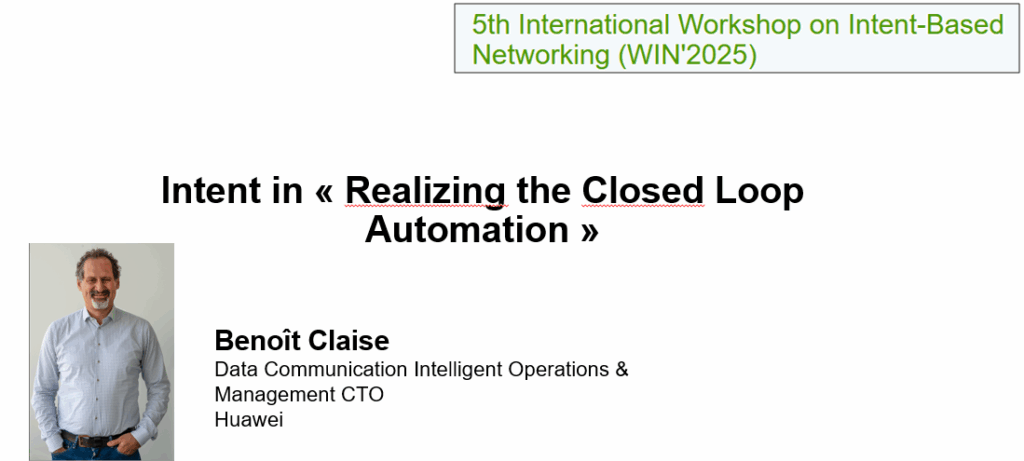
Initially, it was supposed to be 40 min, including Q&A. Just before the presentation, I realized it was actually 1h30, so I was happy to turned this talk into an interactive session with my typical intro “Feel free to ask questions. If you don’t ask questions, I’ll be the one asking questions to you”.
We covered many of my favorite topics, all required to solve the closed loop vision. Just to mention a few building blocks: Model-driven Telemetry, IPFIX, BMP, and data collection & the data mesh principles.

We had great interactions about the “intent”, as imposed by a controller, but also, if you don’t have access to controller, the inferred intent. For example, if you discover a backup link, does it mean that the controller intent (or the service provisioned by the controller) is to have that backup link. If yes, you might want to make sure that assure this backup link, with the below architecture.
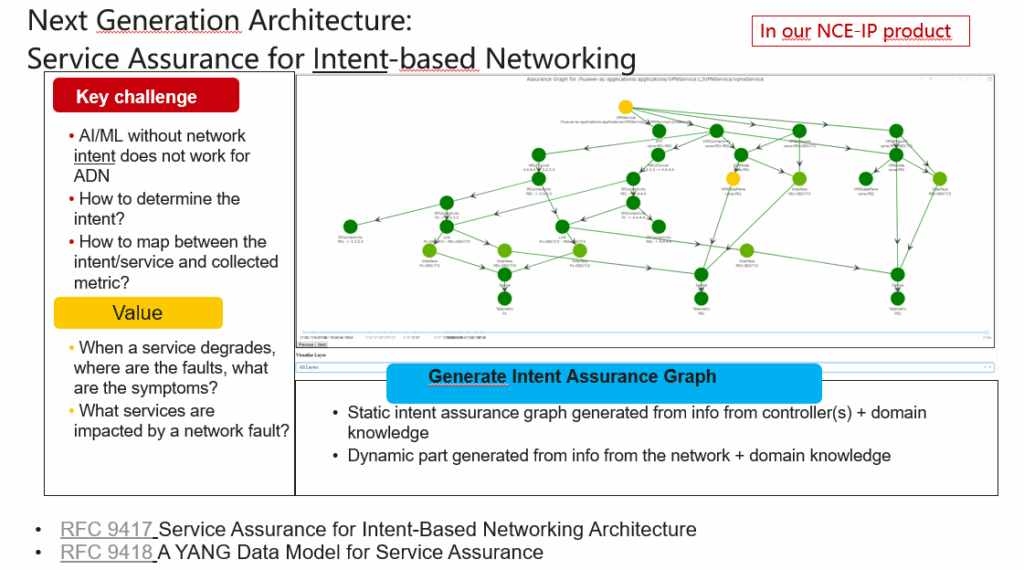
We also covered the anomaly detection and the Semantic Medadata Annotation for Network Anomaly Detection will shape the future about network anomaly exchange between operators and vendors to improve their Service Disruption Detection Systems, and the experiment below about the Network Anomaly Lifecyle.
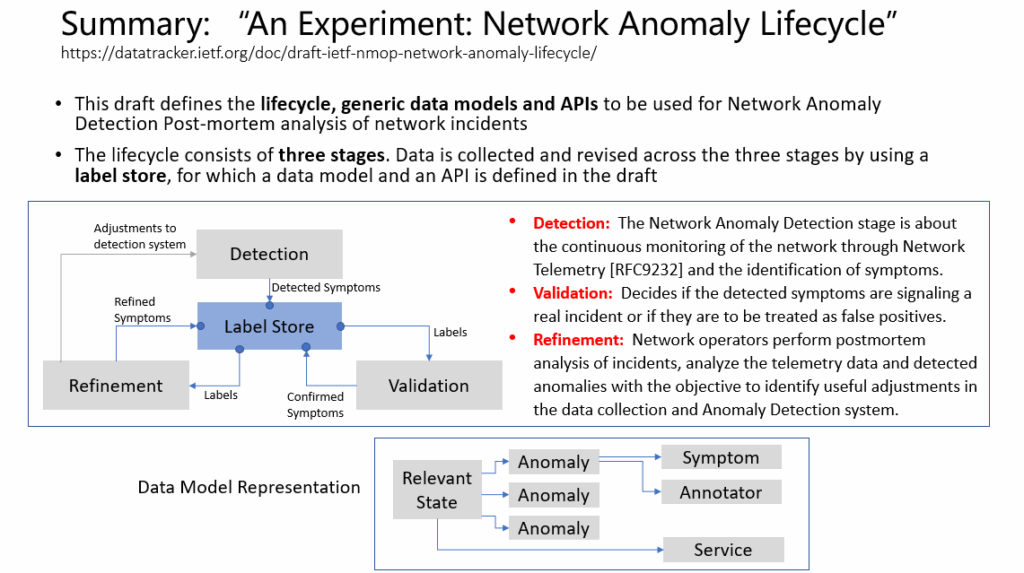
Obviously, we discussed the digital map, renamed SIMAP in the IETF NMOP Working Group, with specific interactions about router unique Ids? Would it be the loopback IP address (btw, it’s still IPv4, believe it or not), the hostname, a UUID, something else? And how you could map this router id in your data collection system. Hint: what is the router unique id for IPFIX and syslog, versus your controller?
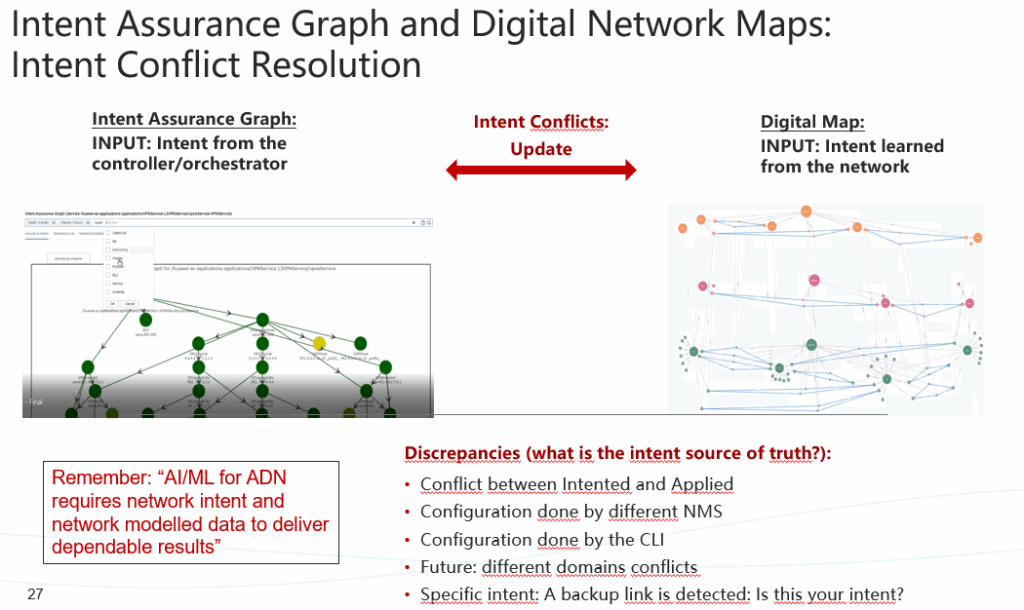
Our rambling lead us to the discuss hiring the perfect engineer: the best network engineer, combined with the best data scientist, and the best software engineer. Since this is impossible, we need to document this knowledge, with the notion of knowledge graph and ontology… ontology that was mentioned in subsequent workshop talks. Interesting!
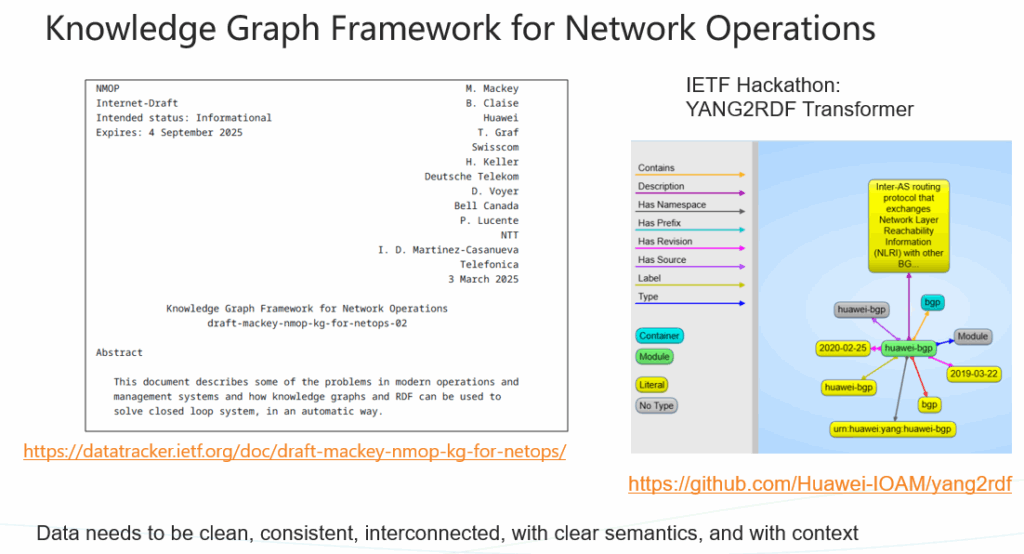
An interactive session, with strong views shared on both sides, to make the audience thinks and react (thanks Prosper), and with many topics discussed in the IETF Network Management Operations (nmop) Working Group and developed by my group. I enjoyed it very much.

